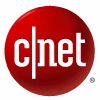

So much Android.
Stephen Shankland/CNETGoogle wants your photo files to be smaller with its upcoming Android P software, and it'll get you there taking the same approach Apple did in 2017.
The next version of Google's software for powering smartphones and tablets will support a photo compression technology called the High Efficiency Image Format (HEIF) -- specifically the HEIC variety that Apple started shipping with iOS 11. HEIC roughly halves the file size of photos compared to the king of image formats, JPEG.
That holds the potential to improve phones significantly. For one thing, it saves on precious storage space that apps, videos, podcasts and map downloads quickly gobble up. For another, it means photos don't use as much of your monthly data plan allowance when sharing or syncing.
Google announced the move Wednesday along with a slew of other Android P details, like support for screen cutouts similar to the notch that makes room for sophisticated cameras on Apple's iPhone X. Android dominates the mobile software market, but Apple's phone business remains influential and extraordinarily profitable, so Google is working to keep Android developers and customers happy.
Google released a preview version of Android P on Wednesday for developers who want to take advantage of new features. The final version won't be done for months.
HEIC is a potentially important step to improving digital-age photography. JPEG is 25 years old, and -- especially when used with high compression settings or to compress images that include text -- it can show blocky artifacts that distract from photo quality. HEIC, based on the High Efficiency Video Coding (HEVC) standard, uses a more advanced compression technology, but it can get a performance boost from chips that support HEVC video.

P. Android P.
GoogleHEIC not only means smaller files sizes, but also offers advanced abilities. Apple uses it to supply 3D scene maps that apps can use for things like adding a creative background.
A single HEIC file also can house a group of photos, for example several shots used to make a single high-dynamic range (HDR) photo or a burst of shots from an action sequence. And it's well adapted to live photos -- the short videos Apple offers in iPhones and Google offers with its Pixel 2. (Apple doesn't actually use HEIC for live photos, though.)
It's not yet clear just how muscular Google's HEIC embrace will be. And it's also uncertain whether Google, like Apple, will use HEIC mostly behind the scenes. That avoids problems stemming from the fact that most software -- Adobe Systems' Photoshop and web browsers, for example -- can't handle HEIC images, at least for now.
HEIC is the latest JPEG challenger, but the older file format has proved remarkably enduring. Others, such as Microsoft's JPEG XR and Google's WebP, haven't come close to dethroning JPEG. Another challenger is possible, too, as Google, Mozilla and others have begun experimenting with a separate photo format based on their AV1 video compression technology. That has a big advantage over HEIC: it's free from patent barriers that sit poorly with browser makers.
Blockchain Decoded: CNET looks at the tech powering bitcoin -- and soon, too, a myriad of services that will change your life.
The Smartest Stuff: Innovators are thinking up new ways to make you, and the things around you, smarter.






 Add Category
Add Category